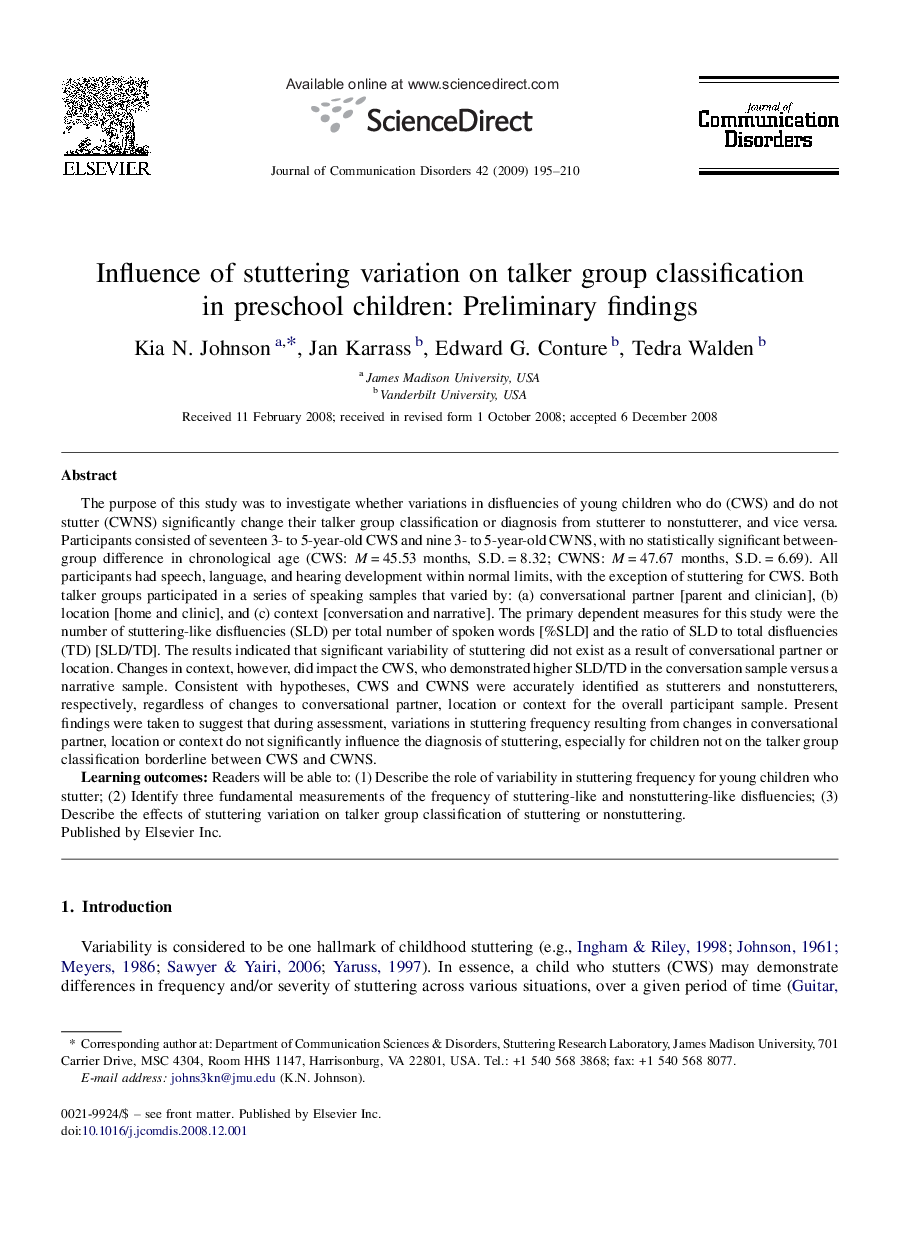| کد مقاله | کد نشریه | سال انتشار | مقاله انگلیسی | نسخه تمام متن |
|---|---|---|---|---|
| 911035 | 917679 | 2009 | 16 صفحه PDF | دانلود رایگان |

The purpose of this study was to investigate whether variations in disfluencies of young children who do (CWS) and do not stutter (CWNS) significantly change their talker group classification or diagnosis from stutterer to nonstutterer, and vice versa. Participants consisted of seventeen 3- to 5-year-old CWS and nine 3- to 5-year-old CWNS, with no statistically significant between-group difference in chronological age (CWS: M = 45.53 months, S.D. = 8.32; CWNS: M = 47.67 months, S.D. = 6.69). All participants had speech, language, and hearing development within normal limits, with the exception of stuttering for CWS. Both talker groups participated in a series of speaking samples that varied by: (a) conversational partner [parent and clinician], (b) location [home and clinic], and (c) context [conversation and narrative]. The primary dependent measures for this study were the number of stuttering-like disfluencies (SLD) per total number of spoken words [%SLD] and the ratio of SLD to total disfluencies (TD) [SLD/TD]. The results indicated that significant variability of stuttering did not exist as a result of conversational partner or location. Changes in context, however, did impact the CWS, who demonstrated higher SLD/TD in the conversation sample versus a narrative sample. Consistent with hypotheses, CWS and CWNS were accurately identified as stutterers and nonstutterers, respectively, regardless of changes to conversational partner, location or context for the overall participant sample. Present findings were taken to suggest that during assessment, variations in stuttering frequency resulting from changes in conversational partner, location or context do not significantly influence the diagnosis of stuttering, especially for children not on the talker group classification borderline between CWS and CWNS.Learning outcomes: Readers will be able to: (1) Describe the role of variability in stuttering frequency for young children who stutter; (2) Identify three fundamental measurements of the frequency of stuttering-like and nonstuttering-like disfluencies; (3) Describe the effects of stuttering variation on talker group classification of stuttering or nonstuttering.
Journal: Journal of Communication Disorders - Volume 42, Issue 3, May–June 2009, Pages 195–210